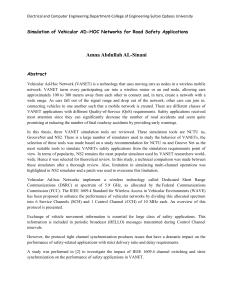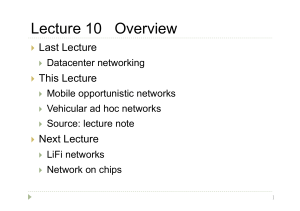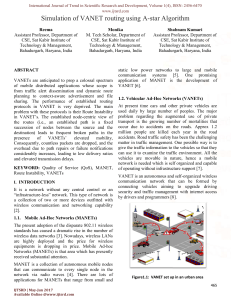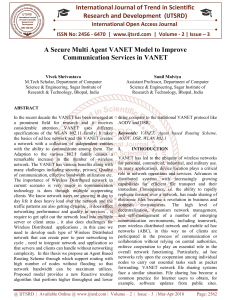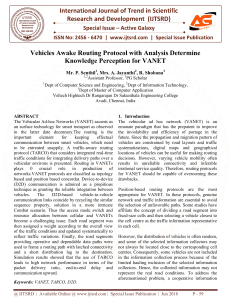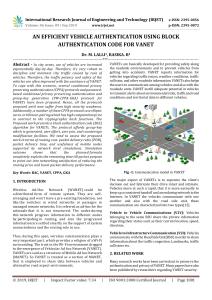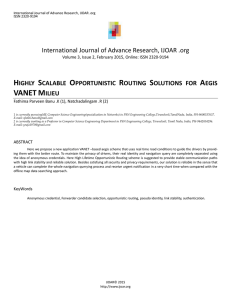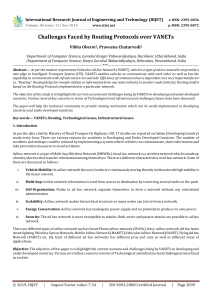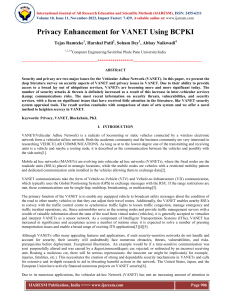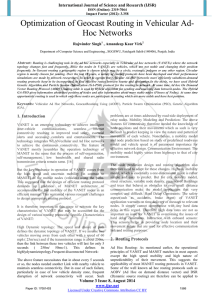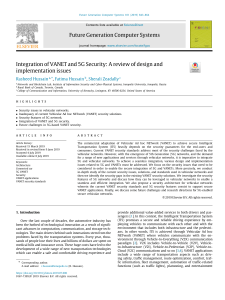Connectivity Aware Routing in Vehicular Ad Hoc Networks Abstract
advertisement
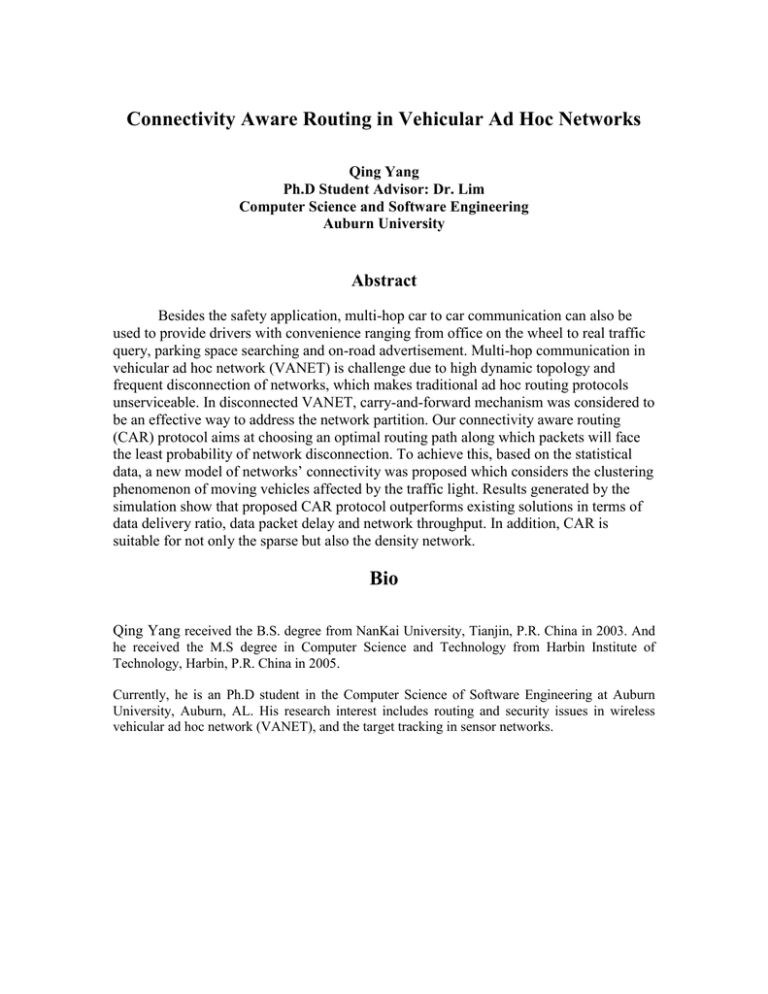
Connectivity Aware Routing in Vehicular Ad Hoc Networks Qing Yang Ph.D Student Advisor: Dr. Lim Computer Science and Software Engineering Auburn University Abstract Besides the safety application, multi-hop car to car communication can also be used to provide drivers with convenience ranging from office on the wheel to real traffic query, parking space searching and on-road advertisement. Multi-hop communication in vehicular ad hoc network (VANET) is challenge due to high dynamic topology and frequent disconnection of networks, which makes traditional ad hoc routing protocols unserviceable. In disconnected VANET, carry-and-forward mechanism was considered to be an effective way to address the network partition. Our connectivity aware routing (CAR) protocol aims at choosing an optimal routing path along which packets will face the least probability of network disconnection. To achieve this, based on the statistical data, a new model of networks’ connectivity was proposed which considers the clustering phenomenon of moving vehicles affected by the traffic light. Results generated by the simulation show that proposed CAR protocol outperforms existing solutions in terms of data delivery ratio, data packet delay and network throughput. In addition, CAR is suitable for not only the sparse but also the density network. Bio Qing Yang received the B.S. degree from NanKai University, Tianjin, P.R. China in 2003. And he received the M.S degree in Computer Science and Technology from Harbin Institute of Technology, Harbin, P.R. China in 2005. Currently, he is an Ph.D student in the Computer Science of Software Engineering at Auburn University, Auburn, AL. His research interest includes routing and security issues in wireless vehicular ad hoc network (VANET), and the target tracking in sensor networks.


